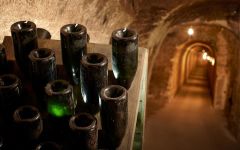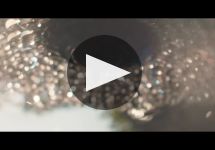Pol Roger Sir Winston Churchill Brut 2000
-
Wine
Enthusiast - Decanter
-
Robert
Parker -
Wine
Spectator


Product Details
Your Rating
Somm Note
Winemaker Notes
Professional Ratings
-
Wine Enthusiast
Dedicated to the memory of the British wartime Prime Minister, who regularly drank Pol Roger, this is always a superlative Champagne. This 2000, at 14 years old, has developed a pale gold color and toastiness. That intensifies the mature flavors and rich texture, while allowing the tight mousse and acidity to keep a sense of structure. It will age much further, although it is perfectly ready to drink now.
-
Decanter
Not at all exciting on release, but at our tasting the greatness and maturity showed in an aristocratic way. Nice smoky complexity. Fat and already mature with strong liquorice and dark chocolate notes.
Rating: 95+ -
Robert Parker's Wine Advocate
The 2000 Cuvée Sir Winston Churchill is another vintage that's drinking at peak today, offering up aromas of yellow apples, crisp stone fruit, butter toast, honeycomb and butterscotch, followed by a medium to full-bodied, ample and fleshy palate that's pillowy, open-knit and charming. There's no reason to defer gratification!
-
Wine Spectator
Smoky, with firm structure and a minerally base note, this offers a fine, creamy texture and hints of dried apricot, lemon curd, cassis, biscuit and blanched almond. The lingering finish echoes the minerality with a touch of oyster shell.
Other Vintages
2004- Decanter
-
Wine
Enthusiast -
James
Suckling -
Wine
Spectator -
Robert
Parker
-
James
Suckling -
Robert
Parker -
Wine
Spectator - Decanter
-
Robert
Parker -
Wine
Spectator
-
Connoisseurs'
Guide -
Robert
Parker -
Wine
Spectator
-
Robert
Parker -
Wine
Spectator -
Wine &
Spirits
-
Wine
Spectator
-
Wine
Spectator -
Wine
Enthusiast
-
Wine
Spectator
-
Wine
Spectator







Pol Roger is one of the few remaining family-owned grande marque Champagne houses. Their grande marque status was guaranteed at the turn of the century when about 20 producers banded together to establish exacting quality controls for Champagne. The annual production at Pol Roger - less than 120,000 cases - is found in the best restaurants of France, England, and the USA, and is exported to over 30 countries. Pol Roger also was the Champagne of choice of British dignitary Sir Winston Churchill, who once said of Champagne, "...In victory I deserve it, and in defeat I need it!".

Representing the topmost expression of a Champagne house, a vintage Champagne is one made from the produce of a single, superior harvest year. Vintage Champagnes account for a mere 5% of total Champagne production and are produced about three times in a decade. Champagne is typically made as a blend of multiple years in order to preserve the house style; these will have non-vintage, or simply, NV on the label. The term, "vintage," as it applies to all wine, simply means a single harvest year.

Associated with luxury, celebration, and romance, the region, Champagne, is home to the world’s most prized sparkling wine. In order to bear the label, ‘Champagne’, a sparkling wine must originate from this northeastern region of France—called Champagne—and adhere to strict quality standards. Made up of the three towns Reims, Épernay, and Aÿ, it was here that the traditional method of sparkling wine production was both invented and perfected, birthing a winemaking technique as well as a flavor profile that is now emulated worldwide.
Well-drained, limestone and chalky soil defines much of the region, which lend a mineral component to its wines. Champagne’s cold, continental climate promotes ample acidity in its grapes but weather differences from year to year can create significant variation between vintages. While vintage Champagnes are produced in exceptional years, non-vintage cuvées are produced annually from a blend of several years in order to produce Champagnes that maintain a consistent house style.
With nearly negligible exceptions, . These can be blended together or bottled as individual varietal Champagnes, depending on the final style of wine desired. Chardonnay, the only white variety, contributes freshness, elegance, lively acidity and notes of citrus, orchard fruit and white flowers. Pinot Noir and its relative Pinot Meunier, provide the backbone to many blends, adding structure, body and supple red fruit flavors. Wines with a large proportion of Pinot Meunier will be ready to drink earlier, while Pinot Noir contributes to longevity. Whether it is white or rosé, most Champagne is made from a blend of red and white grapes—and uniquely, rosé is often produce by blending together red and white wine. A Champagne made exclusively from Chardonnay will be labeled as ‘blanc de blancs,’ while ones comprised of only red grapes are called ‘blanc de noirs.’
